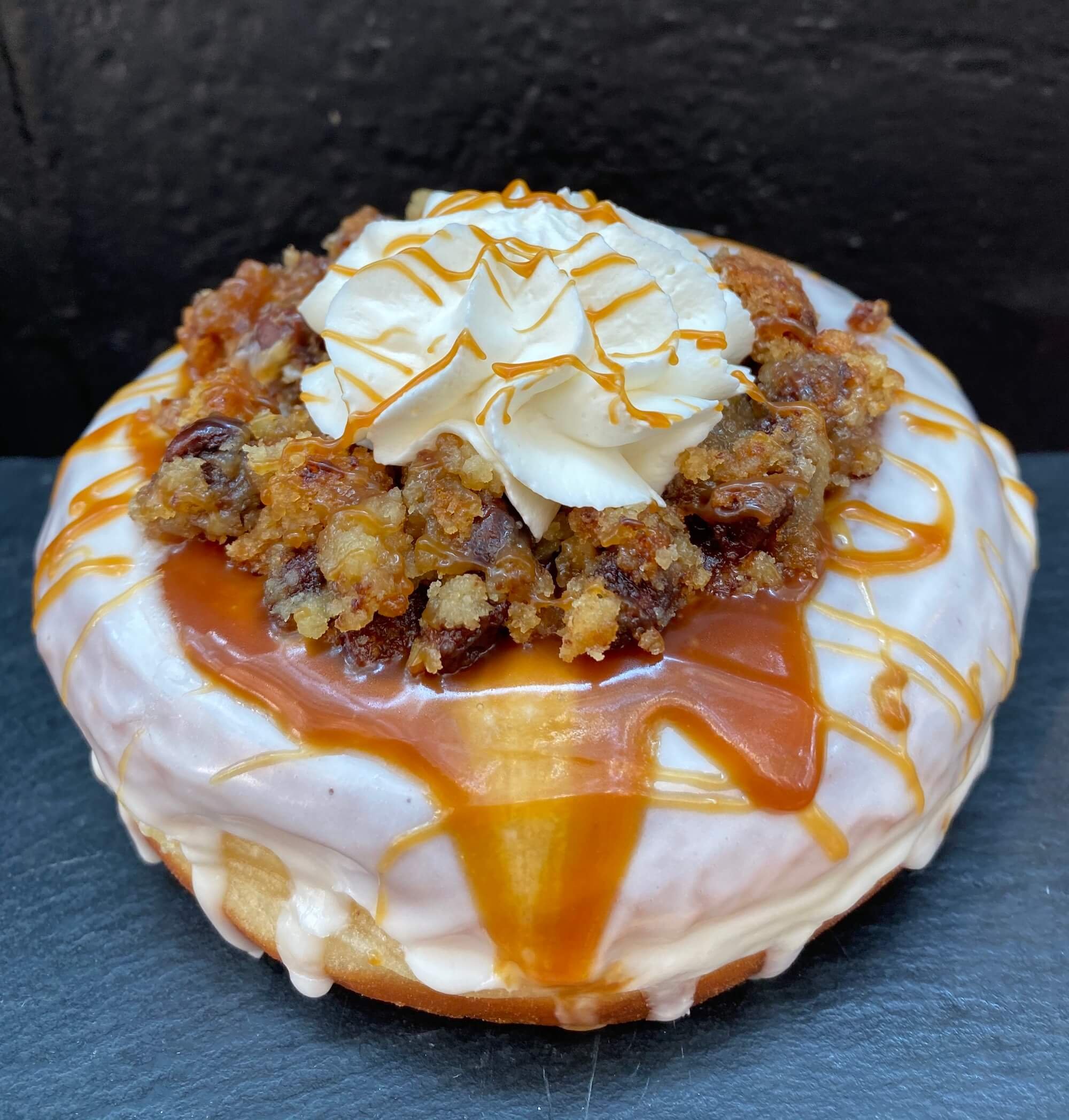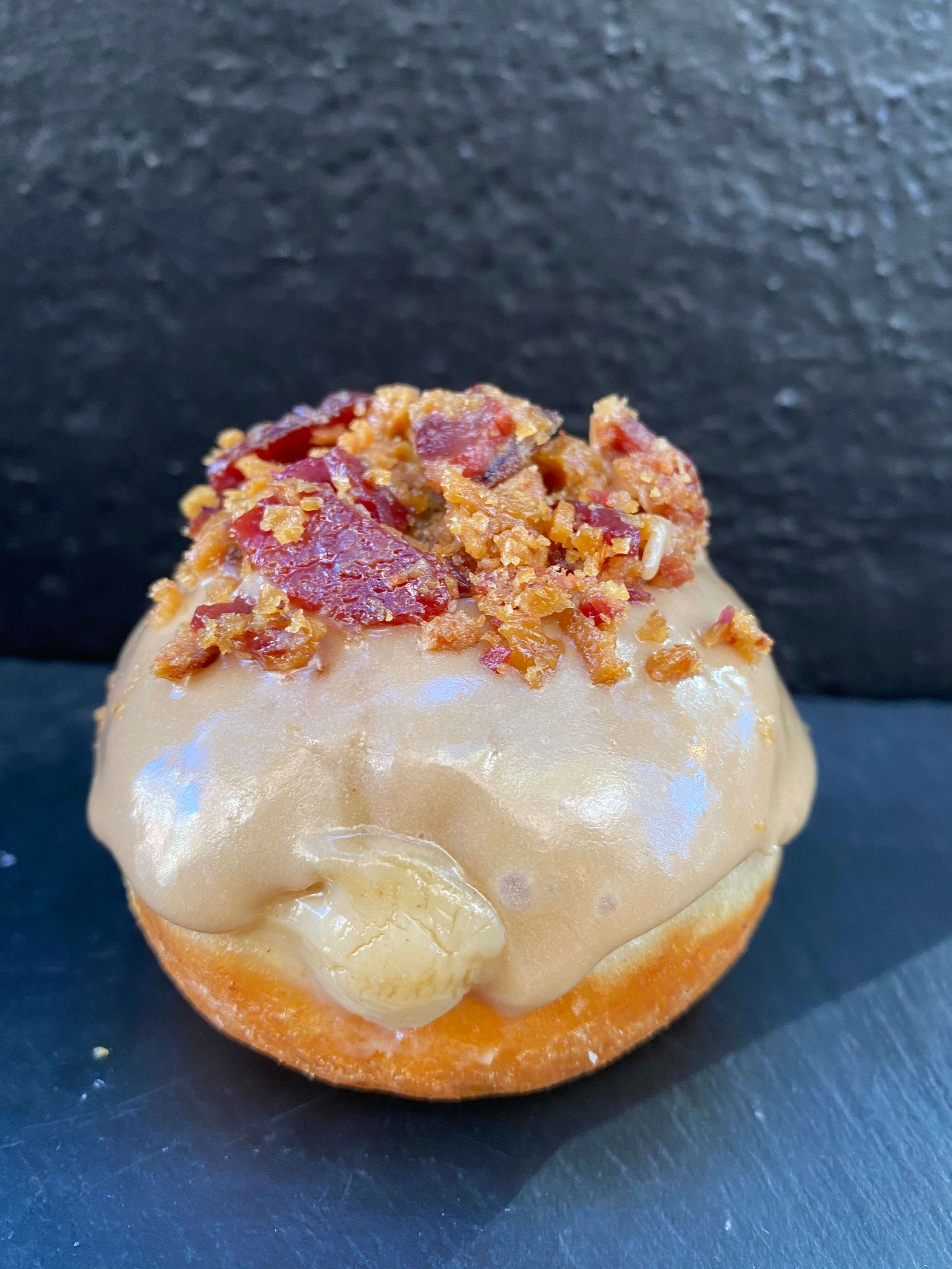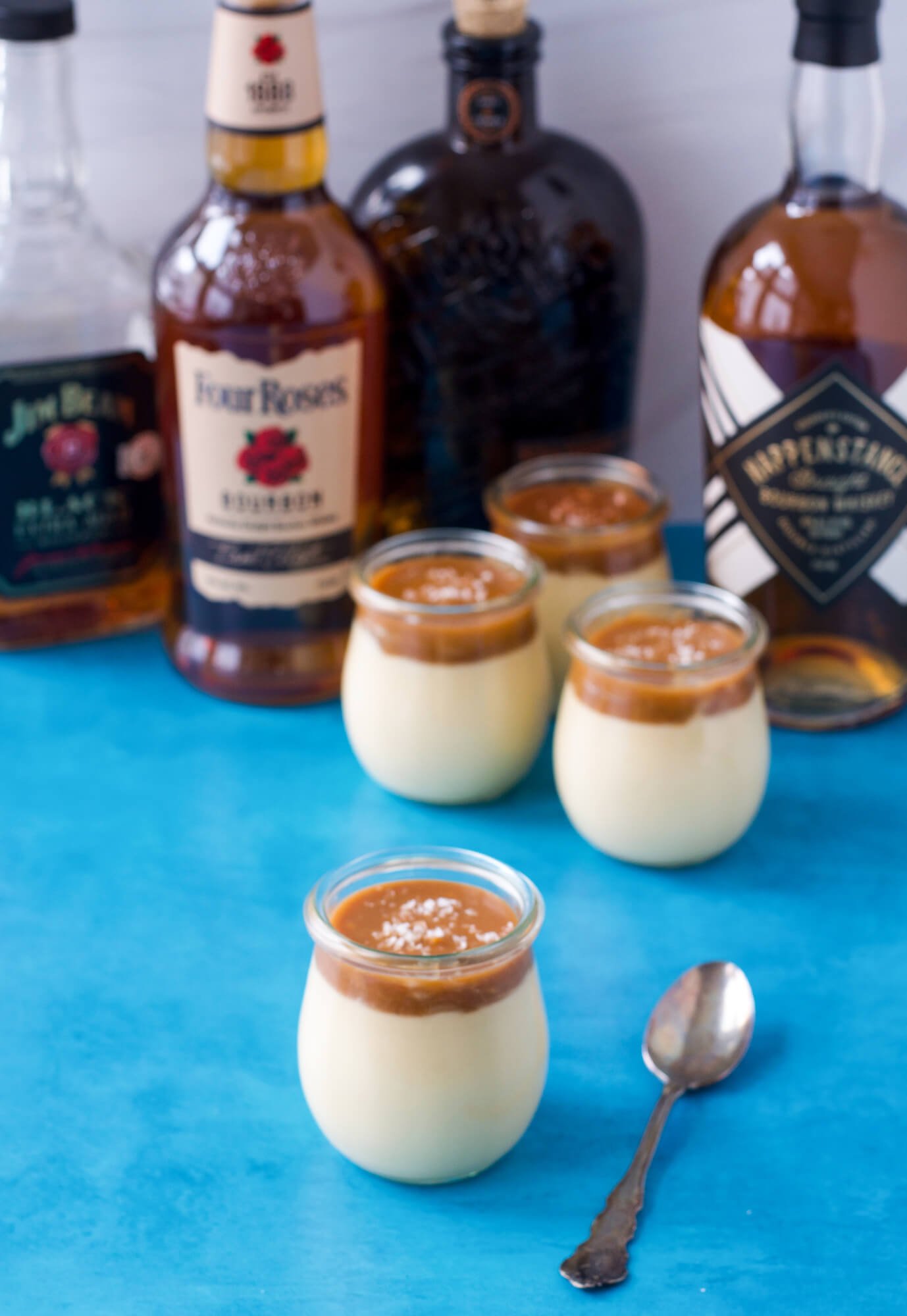How to Add Bourbon to Your Favorite Desserts, Baked and Unbaked
What do bread pudding, pecan pie, and caramel sauce all have in common besides being a delicious way to end a meal? They are all made better with the addition of bourbon, America’s native spirit.
Words like “caramel,” “vanilla” and “nutty” are typically associated with dessert. But they are also commonly used when taking about bourbon, the whiskey that is, by definition, only produced in the United States. With its corn-fueled sweetness and warm spiciness, bourbon is not only a delight to sip and mix into cocktails, but also an inspired addition to sweets and baked goods.
Want to learn more about how to incorporate bourbon into your cookies, cakes and pies? Confused about when in the baking process to add bourbon or which bourbon to use? We will answer all your burning (get it?) questions about baking with bourbon and even offer some fresh ways to use bourbon beyond the classic bourbon ball.
What Is Bourbon?
Before we get to how to use bourbon in your baking, let’s review what distinguishes bourbon from other spirits. Bourbon is a type of whiskey that has 6 defining characteristics. First, bourbon must be made in the U.S.; most bourbon is, in fact, produced in Kentucky, but that is not a requirement. It must contain at least 51% corn, which is what give bourbon its signature sweetness. Bourbon must be distilled at less than 160 proof (80 percent alcohol by volume) and it must enter into the barrel at below 125 proof. Speaking of barrels, bourbon must be aged in new, charred white oak barrels. Lastly, it cannot contain any artificial coloring or flavorings. In fact, the only thing you can add to bourbon after it leaves the barrel is water.
There are many other factors that will influence how a bourbon looks and tastes, from the mix of additional grains, like wheat and rye, to the amount of time the bourbon sits in the barrel. But all bourbons share at least the 6 traits mentioned above as well as a sweet, smooth undertone with the varying notes of spice, caramel, and vanilla that make it a natural pairing with desserts and baked goods.
Why Bake with Alcohol?
Given bourbon’s natural caramel flavor and warm spiciness, it certainly seems like a good fit with desserts and other sweet foods. But before we discuss how to bake with bourbon specifically, let’s first review what role alcohol plays in baking and some of the different ways to incorporate spirits into the final course of the meal.
There are numerous ways to use alcohol in desserts and baked goods and the effect can range from subtle to highly dramatic. Alcohol gives flavor, moisture, and a tender crumb to baked goods when added to a dough or batter. Because the batter will be baked, the alcohol will add depth and flavor without making the final product taste strongly of booze. In terms of how much to add, treat a spirit much as you would an extract and add a few teaspoons up to a tablespoon, or at most two. Soaking dried fruits or nuts in alcohol, and then using those ingredients in quick breads, pies, or cakes, is another way to incorporate spirits into baked goods with subtlety.
There is also a category of baked goods that are soaked or drenched in alcohol, like tiramisù, baba au rhum, or tres leches cake. These dishes will have a much stronger boozy taste than desserts in which the alcohol is only used in the batter and then baked off. For a similar level of intensity, you can add alcohol to syrups, sauces or glazes that are used to finish your bakes. Some examples include adding spirits to a simple syrup that is used to soak cake layers or incorporating liqueurs into frosting or whipped cream.
Lastly, some of the most iconic desserts containing alcohol are those that are flambéed: when alcohol is added to a dish and then ignited for a show-stopping effect. Some popular flambéed desserts include Cherries Jubilee, Crepes Suzette, and Bananas Foster. Flambéed desserts may be more restaurant fare than home cooking, and some people consider them to be a bit old-fashioned. But they are still popular ways to incorporate spirits like rum, bourbon, or cognac into dessert - and to wow your guests at the same time.
Baking with Bourbon
So, alcohol clearly can enhance desserts and other baked goods. Why specifically, should you reach for bourbon when whipping up an indulgent dessert? As I mentioned before, a honeyed, caramel sweetness is one of bourbon’s distinguishing characteristics along with notes of vanilla, toasted nuts and warm spices - all flavors that one typically finds in desserts. In other words, adding bourbon to desserts that share some of its natural flavors will serve to deepen and enrich those flavors as well as contribute booziness.
In addition, because bourbon has such a strong flavor, it won’t disappear when combined with other strong flavors including warm baking spices - think cinnamon, clove, and nutmeg - and complex sweeteners, like honey and maple syrup. Leslie Polizzotto, the co-founder of The Doughnut Project, a doughnut shop located in Manhattan’s West Village, loves working with bourbon for this very reason. “Bourbon is strong and the flavors really shine through,” Polizzotto points out. “Sugar can drown out a lot of other alcohols, such as gin, vodka or champagne,” but not bourbon.
Indeed, the concept of baking with bourbon is not exactly ground-breaking. Home cooks have been doing it for decades, if not longer. Bourbon balls, a pecan-laced, no-bake confection originating in (where else?) Kentucky in the 1930’s may be one of the most iconic bourbon-based desserts. Bourbon and pecans are a perfect example of the adage that what grows together goes together, leading many southern bakers to add bourbon also to their pecan pies.
But these classic bourbon-laced desserts are just the beginning. Bourbon has myriad uses in the sweet kitchen and can be incorporated at many different stages in the baking process. Food writer and photographer Lori Rice, who lived and worked near Kentucky’s famed bourbon distilleries for 10 years, find numerous ways to use bourbon in her baking. “I love adding bourbon to buttercream frostings,” says Rice, who uses a bourbon mint buttercream to top her cocktail-inspired Mint Julep Blondies.
Rice also uses bourbon instead of wine to poach fruits, such as persimmons or peaches, along with whole star anise or clove for flavor. She then uses the fruit to top custards and puddings. Indeed, many fruits pair beautifully with bourbon, including stone fruit, pineapple, and citrus fruits, like lemon and grapefruit. Thus, think about incorporating incorporate bourbon into your favorite fruit-based desserts, like pies, crisps, and cobblers: just add a splash of bourbon to the fruit filling prior to baking.
The Doughnut Project’s unique, boozy doughnuts that attract a huge following on social media demonstrate how bakers can incorporate bourbon into desserts without actually baking with it. “We use it in various components of the doughnut,” says Polizzotto. “We use it as a glaze, as a filling, or as a topping. And we do not cook out the bourbon.” For true bourbon lovers, Polizzotto recommends these unbaked applications, like adding bourbon to a cream filling, a caramel drizzle or a toffee pudding. “We find that not baking it and keeping it in its real form, is the best way” to use bourbon in baking, Polizzotto argues, cautioning that these types of desserts are definitely not for kids.
As for which bourbon to use, Rice recommends a classic, middle-shelf bottle: "Jim Beam is my top pick for a basic culinary bourbon. I like to use it to marinate dried fruits and nuts for the Kentucky fruit cake and modified German stollen I make around the holidays.”
Four Roses is another reasonably priced bourbon that will work well in baked goods without breaking the bank. Polizzotto has collaborated with both Four Roses and Clyde May in the past noting that the brown sugar, nutmeg, and spice flavors in Clyde May’s Straight Bourbon Whiskey inspired her to develop a Sticky Toffee Pudding Roll and well as a Bacon and Toffee doughnut.
Ready to start creating some bourbon-laced desserts of your own? Here are some terrific baking recipes from around the Internet that incorporate bourbon as well our recipe for a bourbon-infused Butterscotch Budino with Bourbon Salted Caramel Sauce.
Maple Bourbon Banana Bread from Food52
Classic Bourbon Balls from Garden and Gun
Bread Pudding with Bourbon Sauce from Fine Cooking
Bourbon-Roasted Peach Cheesecake from Serious Eats
Bourbon Cherry Crisp from Sally’s Baking Addiction
Bourbon Honey Cake from Barefoot Contessa
Bourbon-Ginger Pecan Pie from David Leibovitz
Butterscotch Budino with Bourbon Salted Caramel Sauce
Few people had heard of “budino,” which is simply the Italian word for pudding before it appeared on the menu of Los Angeles chef Nancy Silverton’s restaurant Pizzeria Mozza. But now there are copycat versions all over the country. This budino may be inspired by Italy, but the inclusion of bourbon, which serves to deepen and enhance the butterscotch flavor, is very American. I double down on the booze with a slug of bourbon in the salted caramel topping.
Butterscotch Budino Recipe
Makes 4 servings
1 1/2 cups heavy cream
3/4 cup whole milk
1 egg
2 egg yolks
2 Tablespoon cornstarch
3/4 cup brown sugar
1/2 teaspoon kosher salt
3 Tablespoon butter, at room temperature
1 teaspoon vanilla extract
2 Tablespoon bourbon
Bourbon Salted Caramel Sauce:
3/4 cup heavy cream
1/2 cup granulated sugar
1 Tablespoon corn syrup
4 Tablespoons (1/2 stick) unsalted butter
1 Tablespoons bourbon
2 teaspoons vanilla extract
1 teaspoons fine sea salt
1. Whisk together the cream and milk and set aside. In a separate bowl, whisk the egg, egg yolks, and cornstarch together and set aside.
2. Place the brown sugar, salt, and a 1/4 cup of water in a large, heavy-bottomed saucepan and whisk to combine. Set the pot over medium-high heat and cook the sugar, without stirring, until the mixture darkens and smells like caramel, or reaches 240 degrees on a candy thermometer, 5 to 6 minutes.
3. Carefully add the cream mixture to the pot and whisk to combine. The mixture may bubble up furiously or seize, but continue to whisk and bring the mixture to a boil.
4. Temper the eggs: ladle approximately 1/2 cup of the hot cream mixture into a heatproof measuring cup. While whisking, slowly pour the cream mixture into the bowl with the eggs. Do not be tempted to add too much at once, or stop whisking, or the eggs will scramble.
5. Gradually add the tempered egg mixture back to the saucepan while whisking. The mixture will begin to thicken and turn custardy. Continue to cook for one full minute, then remove from the heat.
6. Off the heat, whisk in the butter until melted. Add the vanilla extract and bourbon and stir to combine.
7. Divide the custard evenly among 4 8-ounce ramekins or jar. Cover and refrigerate until firm, at least 4 to 6 hours, or overnight.
8. Meanwhile, make the caramel sauce: bring the cream to a boil in a small saucepan over high heat, then turn the heat down to low to keep the cream at a simmer.
9. Place the granulated sugar, corn syrup, and a 1/4 cup water in a large, heavy-bottomed saucepan. Stir to combine, then do not stir again. Bring the mixture to a boil over high heat, occasionally brushing down the sides of the pot with a pastry brush dipped in water to dissolve any sugar crystals, until it turns golden brown and smells like caramel, 4 to 5 minutes. Turn down the heat to medium and, while stirring, slowly pour in the cream. The mixture will bubble furiously, so take care.
10. Remove the pot from the heat and stir in the butter until it is melted and the mixture is completely smooth. Then stir in the bourbon, vanilla, and salt. Set aside to cool. (This can be done in advance; cover and refrigerate until needed and reheat prior to serving.)
11. Just prior to serving, top each budino with approximately 2 tablespoons of the caramel sauce and a sprinkle of flaky sea salt. (You will have caramel sauce leftover.) Serve immediately.



